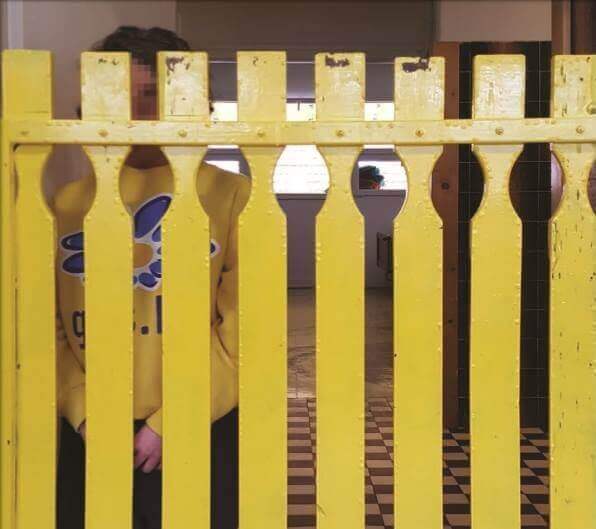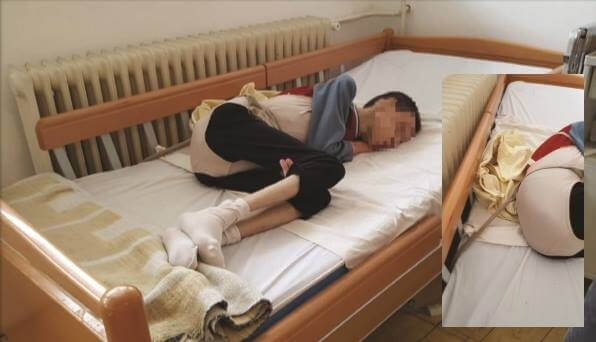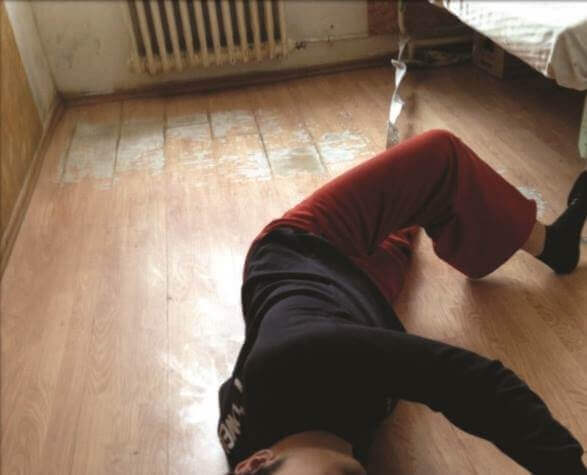There are things that cannot be expressed with words. It is common knowledge that the life of disabled people in Hungary is often a bed of nails. This is partly due to the Hungarian government’s disrespect and careless attitude towards their rights and interests. However, what this means for 220 of our fellow humans in their everyday life cannot be comprehended.

Let us start at the beginning. The Mental Disability Advocacy Centre (MDAC) is an international organization that monitors the living conditions of people living with disabilities in 17 countries in Europe and Africa. One of their headquarters has been located in Budapest since 2002. Their work is mainly funded by the European Union, but these days even the reviled George Soros supports them financially.
As has just been explained, one of the main functions of the MDAC is to monitor and report issues. However, the problem with this is as follows: One should think the fact that someone finally demonstrates interest and commits to reporting existing problems would be welcomed – this, however, is not the case. MDAC’s employees found that there was not a single Hungarian institution for people with disabilities that appreciated their work. Despite this, they somehow managed to get through the doors of one such institution.
It is important to note that the organization does not usually publish its findings. Instead, whenever they encounter any problems they alert the authorities and propose possible solutions. In this case however, they felt obliged to publish their report, because in their view, it was necessary for the Hungarian general public, the responsible authorities and everyone who still retains some humanity to face its findings.
Its conclusion is truly staggering: the state funded institution’s (which is operated by the Social and Child Protection Directorate under the Ministry of Human Resources) closed nature is the perfect breeding ground for abuse and neglect. The report brings to light the deficiencies in Hungary’s legislation, how vulnerable it makes those who need help, who deserve compassion and who have a right to live a life worthy of a human being. And it brings to light the direction these institutions are likely to be heading for without proper supervision and attention.
When we entered the almost entirely bare common bedroom, there was a potted plant on one of the beds.
On April 18, 2017, a black flag hung next to the national red, white and green above the entrance of the Tophouse Special Home. 220 people with disabilities, amongst whom there are both adults and minors, live in the home located in Göd, 30 kilometers from Budapest. The black flag was raised in memory of one of the male residents. “When we entered the almost entirely bare common bedroom, there was a potted plant on one of the beds. The institution expressed its condolences towards the deceased this way” – thus begins the MDAC’s report on their experiences during a visit to the above mentioned home.
The pictures taken in the Special Home in Göd cannot be looked at without shivers running up and down one’s spine. Pictures of young and old men and women strapped to beds, their freedom of movement restricted, their thin bodies bearing signs of abuse follow each other mercilessly in the report. On top of such inhumane conditions, the residents’ safety, their meals, their health and education and the younger residents’ development are not sufficiently provided for either.
MDAC employees noticed several chronically undernourished residents in the institution, many of whom were unable to get up from their bed. They were painfully thin, with their muscles atrophied. Many of them were heavily medicated, completely helpless, whilst suffering from problems caused by isolation and loneliness. Several children were placed in cage-like beds with metal bars (the youngest amongst them was barely three years old), the children – the majority physically disabled – had no means to call for help in case of an emergency. Doors without doorknobs (restricting the residents’ freedom of movement) are the norm, so that the nurses are the only ones to ever use them to enter and exit rooms.

The residents’ physical condition is absolutely dreadful according to MDAC employees, who encountered several untreated wounds and injuries. The residents also unanimously stated that the home’s employees had employed physical violence against many of them. One of the forms of punishment is a cold shower, after which the residents are not allowed to change into dry clothes. Though MDAC employees were not able to verify these claims due to lack of time, they pointed out that the police have not investigated these incidents yet, which means they were not reported.
The observers found no indication that the younger disabled residents received suitable education or developmental treatment. Members of the MDAC were also shocked by the lack of hygiene experienced in the home. Urine was visible in the dirty toilets, in the bathrooms, even in the beds and on the walls, the floor and the furniture. All in all, the entire home was in a dreadful state. It was also alarmingly cold in the building during MDAC’s visit. And the list of inadequacies goes on…
In Göd, as in many other large residential institutions, a lot of money has been invested into renovations and the improvement of the living conditions of disabled people. However, conditions in them remain horrifying, which begs the question: where did the resources supplied by the Hungarian government really go to? MDAC has therefore turned to the authorities and will follow the enquiry and its results.

Based on the contract ratified by the UN, Hungary has human rights commitments which must be upheld. These do not allow for 220 disabled people to be living in inhumane conditions.
The MDAC advised the authorities to launch an immediate investigation into the Tophouse Special Home and the abuse perpetrated there, and demanded a guarantee of the residents’ safety and the provision of adequate assistance to them. The MDAC believe it is important for the home to account for its expenses, with a special focus on the utilization of EU funds. They also suggested that all residential institutions’ operation should be reviewed and that the public should have the opportunity to become and independent controlling body of these institutions. The organization further demands a compensation fund for any victims of torture and abuse, of inhumane or humiliating behaviour suffered not only in the Tophouse, but in any institution for people with disabilities. They also emphasize the need for immediate investigations by the police as a reaction to any reports resembling this one.
This is all the more the case since the conditions discovered in the Tophouse Special Home reflect upon the system as a whole and indicate that people living with disabilities in Hungary today are in an extremely vulnerable position.
The system is rotting
The government started developing large institutions in the fifties (usually by nationalizing military buildings and castles), where they could cram disabled people by the hundreds, preferably in a location where no curious eyes would have access to. One can imagine the conditions: one institution housed more than 700 people. The situation did not really change later either – once used to it, no need was seen to give up common practices. Then, after joining the EU in 2004, discourse on normalizing the situation finally started, but change was still a very slow and sometimes painful process.
When the government finally decided to eliminate these mass institutions in 2011, and to move disabled people somewhere with better conditions, it elegantly allowed itself 30 years to solve the problem. They allocated several billion Forints of EU funds to ensure adequate housing for about 18 thousand people.
More than two thirds of them said that they suffer disadvantages because of their disability.
220 people live in the home in Göd – this is just a tiny fragment of the Hungarian system which constantly as it faces shortages in resources and capacity. According to the 2011 national census, 490 578 persons, i.e. 4.9% of the entire population identified as a person living with some sort of disability. The system barely supports these people: more than two thirds of them said that they suffer disadvantages because of their disability (first amongst these disadvantages was that their movement is restricted, and that they can therefore not participate in everyday life). The employment level of people with disabilities is extremely low: less than 34 000 are working. In Budapest, where the level of education of disabled people is the highest in the country, less than 19% have a degree in higher education. This number is merely 9% if we look at the entirety of the country.
8% of all disabled people are residents of an institution, which is a total of around 40 thousand people who, for whichever reason, are forced to live eke out a miserable existence in some kind of home.
These are of course only numbers: there are many that they do not show a thing . But it is important to be aware of the fact that even though the system tries to sweep the problem under the carpet, it still exists. There are still mass institutions. There are residential homes (and yes, it is also important to acknowledge that there are some that work well!). And there are special homes, where a great number of people still live, but where we have no idea what goes on behind closed doors.
It is only thanks to the MDAC’s employees that the inhumane conditions in the Göd institution were brought to light. This will of course not bring comfort to the institutions’ 220 residents, who have experienced the atrocities of the home. But just like everyone else, they also deserve to be treated with respect, to live their lives with dignity, and to see their rights respected. This is the right of every human being.
![Political Critique [DISCONTINUED]](http://politicalcritique.org/wp-content/uploads/2015/09/Political-Critique-LOGO.png)
![Political Critique [DISCONTINUED]](http://politicalcritique.org/wp-content/uploads/2015/09/Political-Critique-LOGO-2.png)